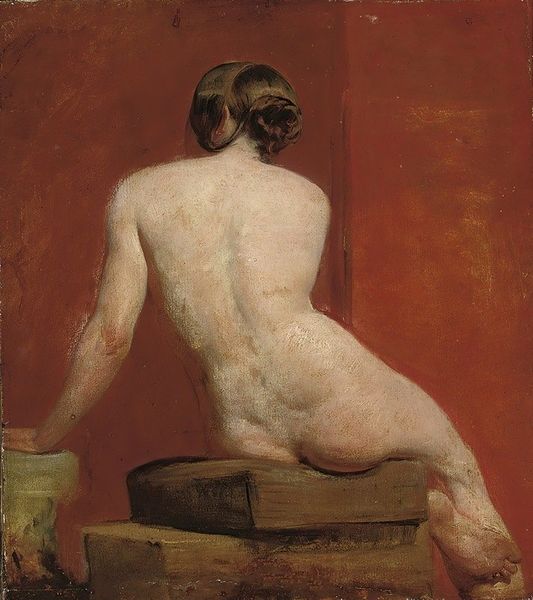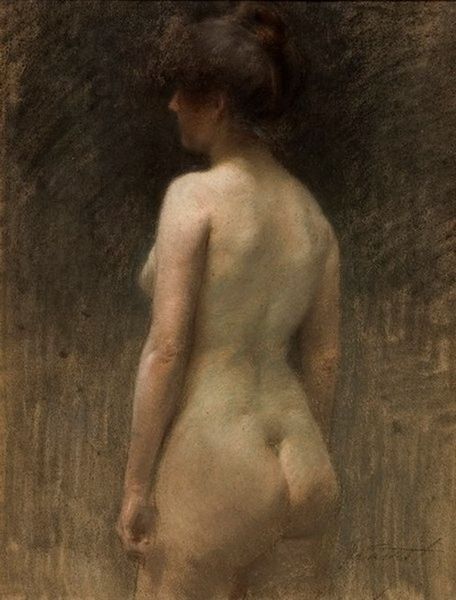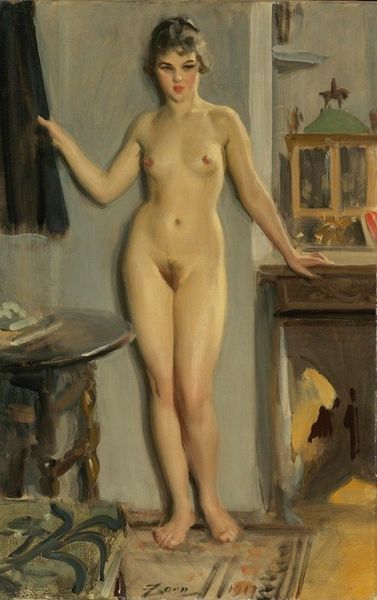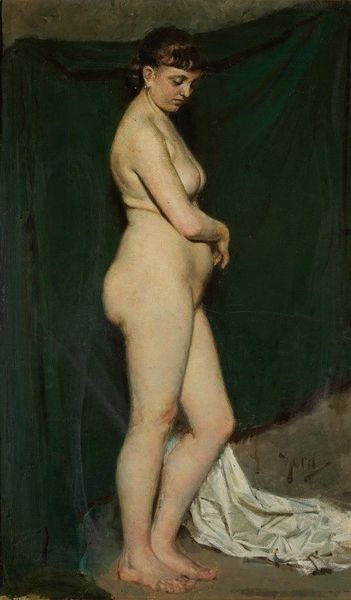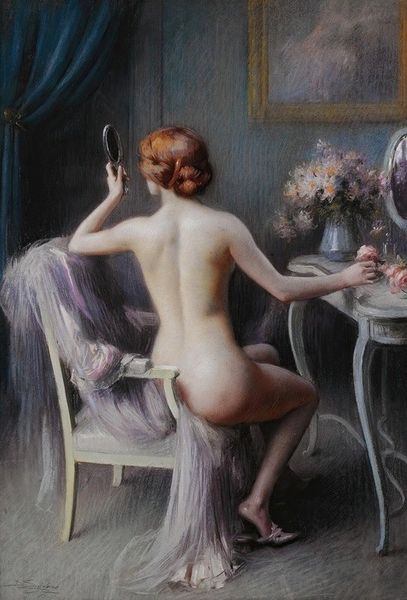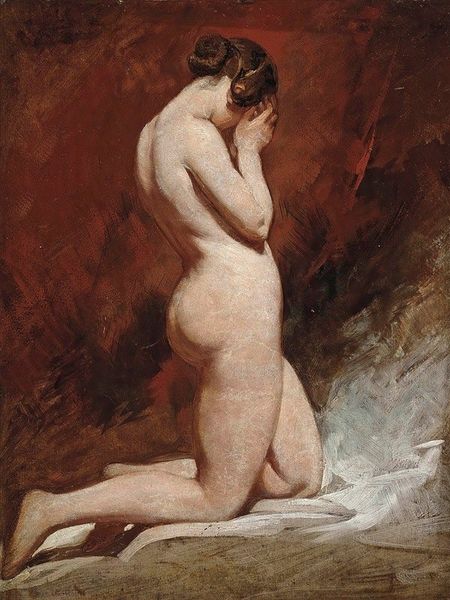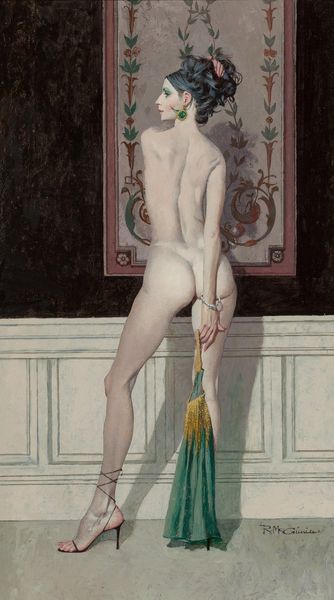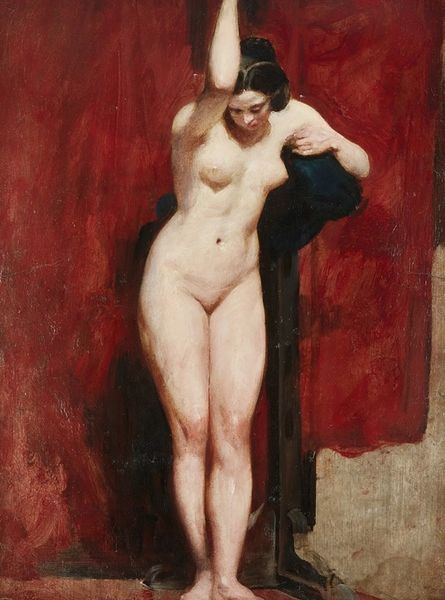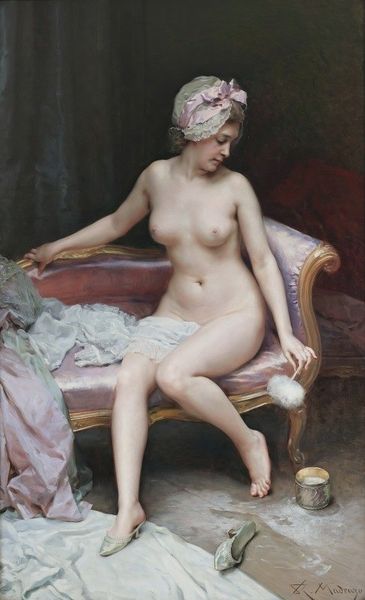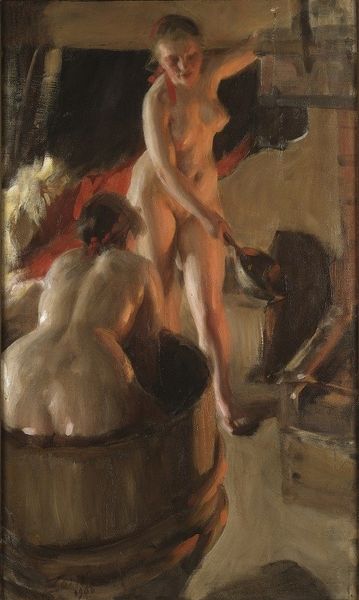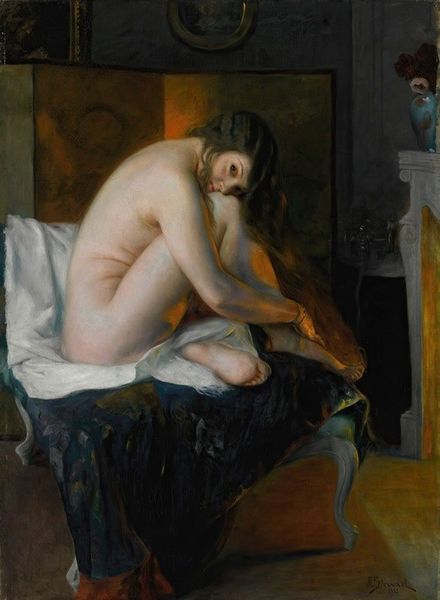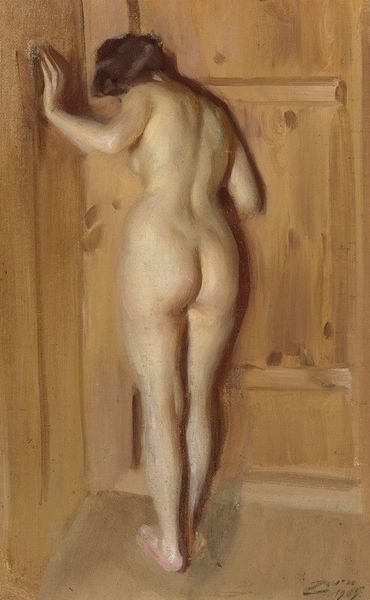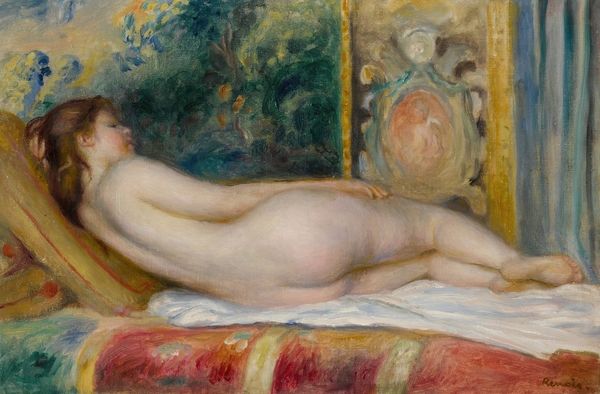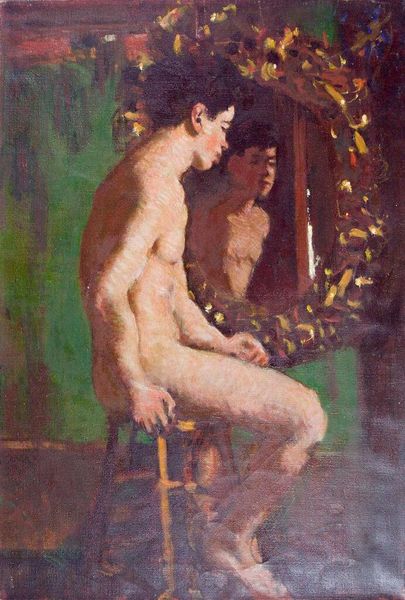
Copyright: Public Domain: Artvee
Editor: Henri Gervex’s "Nude at the Psyche," created around 1910 with oil paints, portrays a woman gazing into a mirror. I find the scene surprisingly intimate, yet detached. What stories do you see woven into the symbols in this work? Curator: The title itself offers a point of entry. The ‘Psyche’ is an archaic term for a cheval glass, but 'Psyche' also references the Greek Goddess whose name translates to 'Soul.' Consider then how mirrors throughout art history function. Do they reflect mere vanity or something deeper, a search for self-understanding? Editor: That’s interesting. The mirror isn't just a reflective surface; it's a portal to self-reflection and a commentary on femininity at the time, maybe? Curator: Precisely. Notice how Gervex situates the figure—turned away, almost anonymous, but still intensely present within her private sphere. Think about the era, the burgeoning interest in psychology with Freud; what might this composition suggest about the sitter’s inner world? The hat on the chair seems very deliberately placed; could it signal something about a hidden identity, perhaps? Editor: It's like the room itself holds unspoken secrets. I'm starting to see the mirror less as vanity and more as a quest. The artist encourages us to see ourselves in the mirror and look deeper. Curator: The symbolism extends beyond just the visual; Gervex invites a psychological inquiry through the mirror’s silent reflection. This image asks, "What is the meaning of feminine identity when perceived only by the self?" It suggests a very pensive intimacy. Editor: I didn't think I would get to philosophy reading about an intimist nude. Curator: Every object in art carries echoes; understanding their symbolic language transforms mere viewing into insightful dialogue. I found your own insights intriguing too, thank you.
Comments
No comments
Be the first to comment and join the conversation on the ultimate creative platform.
